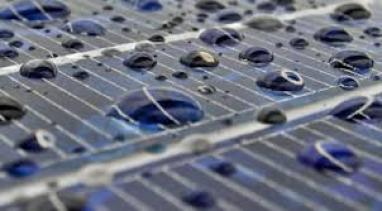Researchers at the Ocean University of China in Qingdao and Yunnan Normal University in Kunming developed a highly efficient dye-sensitized solar cell coated with a film of graphene, that makes for an all-weather solar cell that is triggered by both sunlight and raindrops. The results of this study may help eliminate a major disadvantage of solar cells - the fact that they produce no power when it's raining.

The researchers used graphene electrodes to obtain power from the impact of raindrops. Raindrops are not pure water, as they contain salts that dissociate into positive and negative ions. The positively charged ions, including sodium, calcium, and ammonium ions, can bind to the graphene surface. At the point of contact between the raindrop and the graphene, the water becomes enriched with positive ions and the graphene becomes enriched in delocalized electrons. This results in a double-layer made of electrons and positively charged ions, a feature known as a pseudocapacitor. The difference in potential associated with this phenomenon is sufficient to produce a voltage and current.